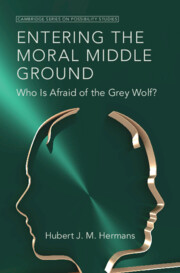Refine search
Actions for selected content:
35 results
The Function of Hypocrisy Norms
-
- Article
-
- You have access
- Open access
- HTML
- Export citation
5 - The Persistence of Dependence
- from Part III - Liberty as Independence: The Ideal Betrayed
-
- Book:
- Liberty as Independence
- Published online:
- 23 January 2025
- Print publication:
- 06 February 2025, pp 119-140
-
- Chapter
- Export citation
Why Does Possessing Standing to Blame Matter?
-
- Journal:
- Canadian Journal of Philosophy / Volume 54 / Issue 1 / January 2024
- Published online by Cambridge University Press:
- 10 January 2025, pp. 59-73
-
- Article
-
- You have access
- Open access
- HTML
- Export citation
12 - Dead Zones of Tax Inspection: The New Strategic Direction in the Danish Tax Authority and Its Consequences for Front Staff
-
-
- Book:
- Anthropology and Tax
- Published online:
- 12 December 2024
- Print publication:
- 19 December 2024, pp 284-303
-
- Chapter
-
- You have access
- Open access
- HTML
- Export citation
Indicting the Athenians in the Melian dialogue
-
- Journal:
- The Journal of Hellenic Studies / Volume 144 / November 2024
- Published online by Cambridge University Press:
- 28 October 2024, pp. 164-181
- Print publication:
- November 2024
-
- Article
-
- You have access
- Open access
- HTML
- Export citation
Limitations of hypocrisy as a strategy of critique in international politics
-
- Journal:
- International Theory / Volume 16 / Issue 3 / November 2024
- Published online by Cambridge University Press:
- 04 October 2024, pp. 295-320
-
- Article
-
- You have access
- Open access
- HTML
- Export citation
Chapter 2 - Embracing Bad as Good via Internalization
-
- Book:
- Entering the Moral Middle Ground
- Published online:
- 15 March 2024
- Print publication:
- 28 March 2024, pp 50-85
-
- Chapter
- Export citation

Entering the Moral Middle Ground
- Who Is Afraid of the Grey Wolf?
-
- Published online:
- 15 March 2024
- Print publication:
- 28 March 2024
ON TRUSTS, HYPOCRISY AND CONSCIENCE
-
- Journal:
- The Cambridge Law Journal / Volume 83 / Issue 1 / March 2024
- Published online by Cambridge University Press:
- 03 April 2024, pp. 158-183
- Print publication:
- March 2024
-
- Article
-
- You have access
- Open access
- HTML
- Export citation
The Good and the Wrong of Hypocritical Blaming
-
- Article
-
- You have access
- Open access
- HTML
- Export citation
4 - Baruch Spinoza and Conscientious Speech
-
- Book:
- The Coerced Conscience
- Published online:
- 07 December 2023
- Print publication:
- 21 December 2023, pp 69-90
-
- Chapter
- Export citation
1 - A New Kind of Politics?
-
- Book:
- The Coerced Conscience
- Published online:
- 07 December 2023
- Print publication:
- 21 December 2023, pp 1-21
-
- Chapter
- Export citation
19 - Hypocrisy and Situational Irony
- from Part V - Irony, Affect, and Related Figures
-
-
- Book:
- The Cambridge Handbook of Irony and Thought
- Published online:
- 20 December 2023
- Print publication:
- 07 December 2023, pp 345-364
-
- Chapter
- Export citation
12 - Practitioner Views of Corporate Political Responsibility
- from Section V - Implementing Corporate Political Responsibility: Opportunities and Challenges
-
-
- Book:
- Corporate Political Responsibility
- Published online:
- 16 November 2023
- Print publication:
- 30 November 2023, pp 355-388
-
- Chapter
- Export citation
10 - Conclusion
-
- Book:
- Execution, State and Society in England, 1660–1900
- Published online:
- 12 October 2023
- Print publication:
- 26 October 2023, pp 367-378
-
- Chapter
- Export citation
Chapter 3 - Andrewes’ Anti-Puritanism
- from Part I - Laudianism: Where It Came From
-
- Book:
- On Laudianism
- Published online:
- 05 October 2023
- Print publication:
- 19 October 2023, pp 66-79
-
- Chapter
- Export citation
Chapter 4 - Puritan Politics
- from Part I - Laudianism: Where It Came From
-
- Book:
- On Laudianism
- Published online:
- 05 October 2023
- Print publication:
- 19 October 2023, pp 80-84
-
- Chapter
- Export citation
Chapter 1 - Introduction
-
- Book:
- Atheists and Atheism before the Enlightenment
- Published online:
- 06 July 2023
- Print publication:
- 27 July 2023, pp 1-32
-
- Chapter
- Export citation
Religion, hypocrisy, and betting on secularity: reversing Smilansky's wager
-
- Journal:
- Religious Studies / Volume 60 / Issue 1 / March 2024
- Published online by Cambridge University Press:
- 18 April 2023, pp. 174-186
- Print publication:
- March 2024
-
- Article
-
- You have access
- Open access
- HTML
- Export citation
12 - Making Mistakes
- from Part IV - Masses, Media, and Popular Judgment
-
- Book:
- The Making Sense of Politics, Media, and Law
- Published online:
- 06 April 2023
- Print publication:
- 13 April 2023, pp 252-283
-
- Chapter
-
- You have access
- Open access
- HTML
- Export citation
